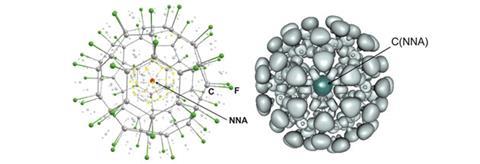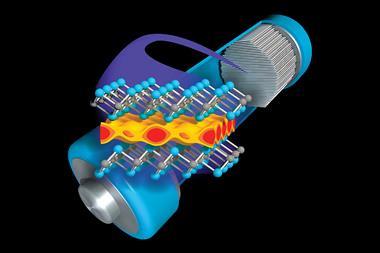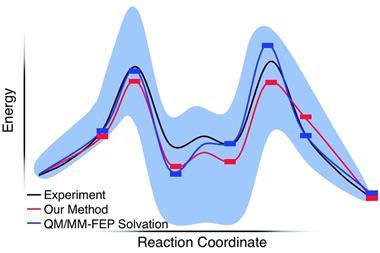Electride criteria pave way for new research into these fascinating materials
Scientists in Spain have proven the existence of gas-phase electride materials through a computational method with the ability to distinguish electrides from similar ionic compounds.
Ionic compounds usually comprise both positive and negative ions – a typical example being sodium chloride. Electrides are a rare and unique type of ionic compound where isolated electrons held in space through electrostatic forces constitute the anionic part. Owing to their distinctive magnetic, chemical, electric and optical properties, electrides are promising materials for a plethora of applications including catalysts for ammonia production, hydrogen storage agents and optoelectronic devices. However, being difficult to synthesise and characterise, up to now only 10 electrides have been prepared and only three are stable at room temperature. ‘Their experimental characterisation is only possible by indirect means,’ explains Eduard Matito from the University of Girona who led the work. ‘The density of a free electron – or a handful of them – is not large enough to be located in the x-ray of a crystal structure.’
Matito’s team set out to create a computational tool to fill in the gaps and accurately differentiate electrides from similar species. ‘The electronic structure of electrides shows an important signature: a maximum of the electronic density in the non-nuclear position,’ he says. The existence of a non-nuclear attractor (NNA), an electron localisation function (ELF) basin, and negative values of the electron density Laplacian were used as the main criteria for characterising electrides in the study. Matito admits that finding these three characterising criteria was a challenge, along with realising an exact computational description of the electrides.

Ten previously considered electrides were assessed with the new tool. These spanned three different types of electride: push, pull and non-alkali. The first two categories both contain alkali metals and differ through the electrostatic forces on the free electrons. In push electrides, electron donor groups push the electron away from the alkali metal; in pull electrides, electron withdrawing groups do the opposite. Only one non-alkali electride was available to assess, containing a C60F60 cage in which an electron can reside. Matito found that this molecule could be considered electride-like but could not be labelled a formal one-electron electride due to a low ELF basin value of 0.19. Only two of the studied molecules were found to be ‘formal electrides’ – TCNQNa2 and TCNQLi2 – both push electrides and both based on 7,7,8,8-tetracyanoquinodimethane.

Matito hopes their research will aid the discovery of new electrides and motivate research on the species. ‘Finding new electrides is extremely challenging and only a handful are presently known,’ comments David Singh, materials science expert from Oak Ridge National Laboratory in the US, ‘This approach offers the prospect that many new electrides will be discovered opening up practical applications of this materials class.’
References
This article is free to access unil 6 March 2015. Download it here:
V Postils et al, Chem. Commun., 2015, DOI: 10.1039/c5cc00215j












No comments yet